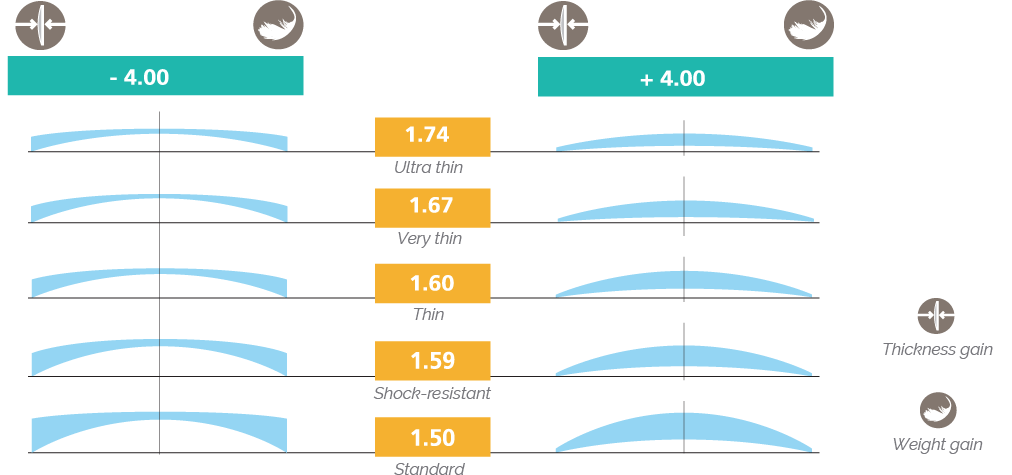OPTICAL LENSES
Ophthalmic lenses
Single-vision lenses


Did you know ?
The right attitude
A sight defect like myopia or astigmatism, however slight, must always be corrected. Perfect far vision is essential, for example, when driving. It is a serious matter of safety. If you sometimes think “my sight seems to have got worse” or “Maybe I need eyeglasses”, you should visit an ophthalmologist or ask for advice from an optician. Your new lenses will considerably improve your quality and standard of living.
Anti-fatigue lenses
After prolonged near vision efforts, the muscles tend to stay fixed. Focusing thus becomes more difficult. Vision becomes blurry and some pain may be felt…this is eye strain.
Luckily, there are ‘advanced’ single-vision lenses that include a slightly higher power towards the bottom of the lens, which supports accommodation for near vision and improves comfort when looking at a screen.

Progressive lenses
Progressive lenses allow wearers to see clearly at all distances, both near and far, with the same pair of eyeglasses. They make vision comfortable when looking at the horizon, driving, working at a computer and reading a smartphone.
A progressive lens is therefore a lens whose correction progressively changes from the top to the bottom of the lens, without any visible difference.
Progressive lenses are the perfect solution for correcting presbyopia which makes near vision difficult after the age of 40. While presbyopia is unavoidable, progressive lenses correct it while ensuring comfortable vision at all distances.
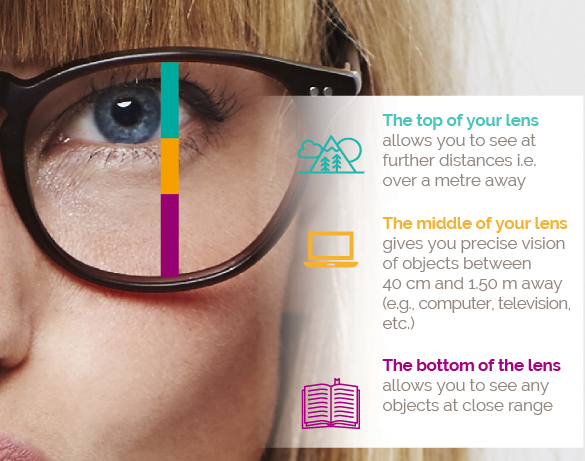
Anti-reflective coatings
Using a coating improves the lens’s quality and performance, as well as the wearer’s image clarity. Offering protection tailored to your lifestyle and your needs, you can add protection against scratches, reflections, smudge, static and UV rays.
For maximum comfort and protection, BBGR has also developed anti-reflective coatings that protect against both blue light and UV rays, while also reducing glare at night.
The coating comprises several layers, micrometres thin, that protect the lens and make it more comfortable to wear.
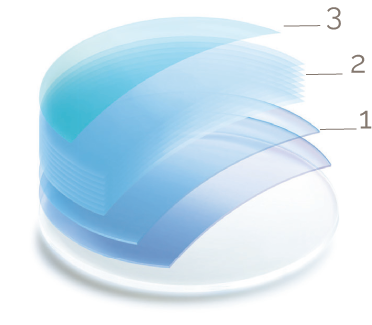
Photochromic lenses
Transitions photochromic lenses help your eyes to be protected from everyday light.
Indeed, in the clear state, they will be effective indoors, to protect your eyes from harmful light rays from a screen for example, and outdoors, they darken on contact with the sun’s rays.
Thanks to its revolutionary technology, Transitions offers you a unique solution for managing light on a daily basis, whatever its intensity.
All Transitions photochromic lenses:
– block 100% of UVA and UVB rays,
– help protect against harmful blue light from digital devices, screens and especially intense sunlight,
– help reduce glare and fatigue by optimizing the amount of light your eyes receive.
Depending on your needs, your style, several Transitions lenses are available (colours, mirror effects, polarizing, etc.) ask your optician for advice.
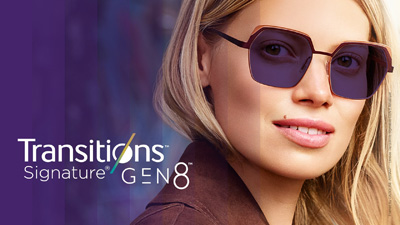
Sun lenses
There are several types of sun lenses:
– tinted lenses are available in several colors: dark to relieve your eyes if you are exposed to strong light, or clear, to match your frame for a unique look.
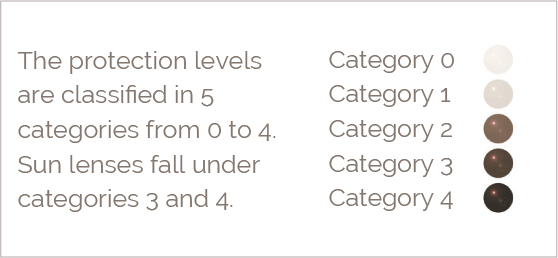
– mirrored lenses, to protect against UV rays while having an incomparable style,
– polarized lenses, to reduce feelings of glare, better perceive contrasts.


Did you know ?
Remember to wear your sunglasses as soon as possible. This is because UV rays pass through clouds. Ask your optician for advice on the most suitable shade for your correction and your activities.
BBGR’s protection against UV rays
Clear or solar BBGR lenses provide optimal protection against UV rays.
In addition, the Neva® Guard Sun UV treatment absorbs UV rays on the back of the lens:
- Optimal protection against UV rays
- Reduction of glare from UV rays reflected on the back
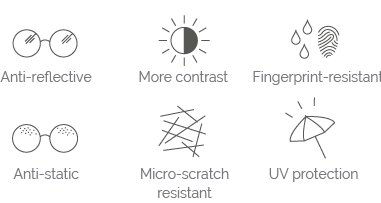
1. Kolozsvari L, Nogradi A, Hopp B, Bor Z. UV absorbance of the human cornea in the 240- to 400-nm range. Invest Ophthalmol Vis Sci. 2002;43(7):2165–2168.
2. Citek K, Andre B, Butler JJ et al. The Eye and Solar Ultraviolet Radiation: New understandings of the hazards, costs, and prevention of morbidity. Report of a roundtable. June 2011. Calculation based on urban workers in the northern hemisphere.
3. Fishman GA. Ocular phototoxicity: guidelines for selecting sunglasses. Surv Ophthalmol. 1986; 31(2):119-24.

Did you know ?



Materials
